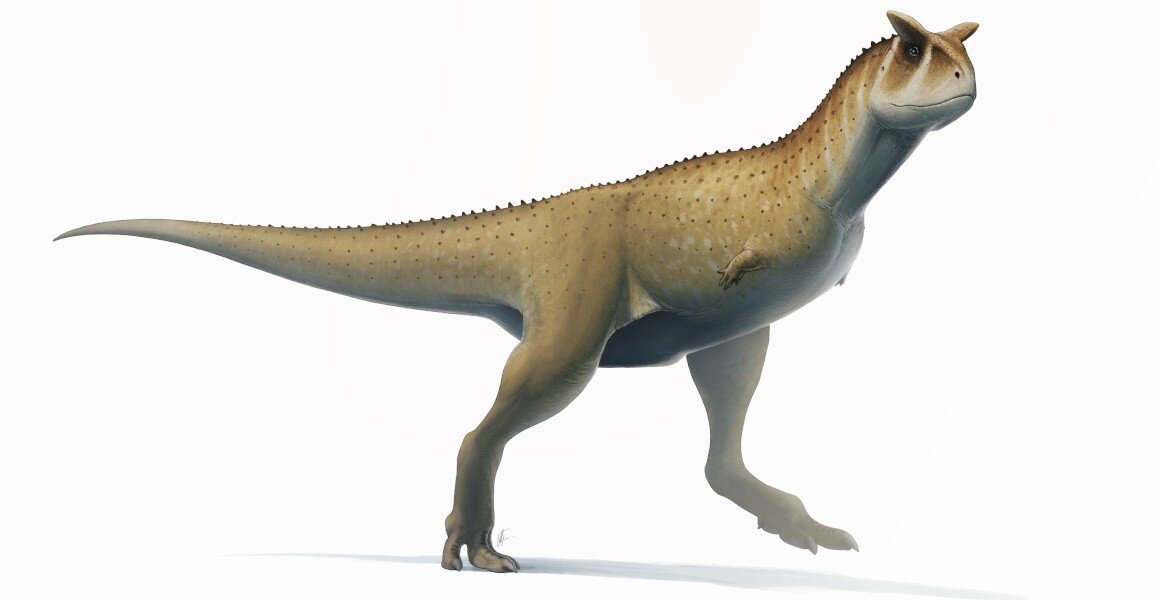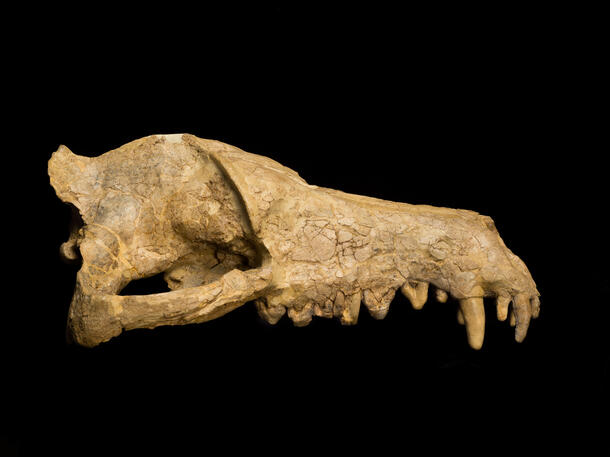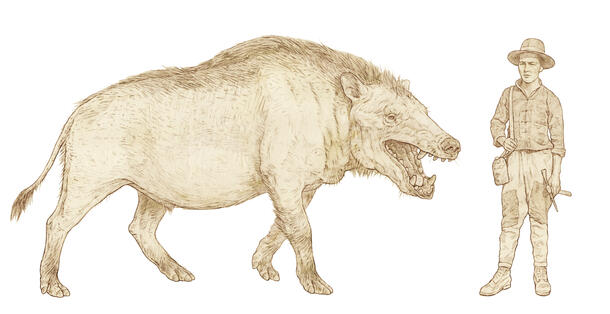- Joined
- Jan 17, 2010
- Messages
- 4,541
- Reaction score
- 5,504
I like to think there's a gigantic T-Rex waiting to be discovered by science.
- There's probably bigger T-rex. I will post about the 3 sugested divisions on the Rexes family when i get on a pc.
I like to think there's a gigantic T-Rex waiting to be discovered by science.
Any prehistoric animals you'd like see in a zoo?I very much look forward to this thread and where it goes
I feel like there have been a few movies about why that’s a bad idea…Any prehistoric animals you'd like see in a zoo?
The pic of the Fossa that I posted in In your zoo thread also had a giant ancestor.I feel like there have been a few movies about why that’s a bad idea…
Jkjk
Literally any of them, so many cool animals even the non dinosaurs. Some really cool extinct crocodiles, weird mammals, giant inverts, insane fish.
I feel like there have been a few movies about why that’s a bad idea…
Jkjk
Literally any of them, so many cool animals even the non dinosaurs. Some really cool extinct crocodiles, weird mammals, giant inverts, insane fish.
That’s a tough question, my immediate answer is yes. But there are so many variables, we are running out of wild places for the animals we have now. So to bring an animal back from extinction there would need to be a lot of factors in play.- What your opinion on animals extinct by humans stupidy? f we could bring back the Barbary lion?
- I've got something bigger here:
Carcharodontosaurus, the "Great White Shark" Dinosaur
By
Bob Strauss
Updated on February 07, 2019
Carcharodontosaurus, the "Great White Shark lizard," certainly has a fearsome name, but that doesn't mean it springs as readily to mind as other plus-sized meat-eaters like Tyrannosaurus Rex and Giganotosaurus. On the following slides, you'll discover fascinating facts about this little-known Cretaceous carnivore. fascinating facts about this little-known Cretaceous carnivore.
Around 1930, the famous German paleontologist Ernst Stromer von Reichenbach discovered the partial skeleton of a meat-eating dinosaur in Egypt―on which he bestowed the name Carcharodontosaurus, "Great White Shark lizard," after its long, shark-like teeth. However, von Reichenbach couldn't claim Carcharodontosaurus as "his" dinosaur, since virtually identical teeth had been discovered a dozen or so years before.
Because of its limited fossil remains, Carcharodontosaurus is one of those dinosaurs whose length and weight is especially difficult to estimate. A generation ago, paleontologists flirted with the idea that this theropod was as big, or bigger than, Tyrannosaurus Rex, measuring up to 40 feet from head to tail and weighing as much as 10 tons. Today, more modest estimates put the "Great White Shark lizard" at 30 or so feet long and five tons, a couple of tons less than the biggest T. Rex specimens.
https://www.thoughtco.com/things-to-know-carcharodontosaurus-1093777
Carcharodontosaurus saharicus
This huge meat eater was 45 feet long (5 feet longer than T-rex) and weighed 8 tons, making it one of the largest carnivores that ever walked the earth. This African carnosaur had a gigantic 5’4" long skull and enormous jaws with 8" long serrated teeth. It walked on two legs, had a massive tail, bulky body and short arms ending in three-fingered hands with sharp claws. Carcharodontosaurus is one of the longest and heaviest known carnivorous dinosaurs, with various scientists proposing length estimates ranging between 12 and 13 m (39-43.5 ft) and weight estimates between 6 and 15 metric tons. Its long, muscular legs, and fossilized trackways indicate that it could run about 20 miles per hour, though there is some controversy as to whether it actually did, a forward fall would have been deadly to Carcharodontosaurus, due to the inability of its small arms to brace the animal when it landed. Carcharodontosaurus was a carnivore, with enormous jaws and long, serrated teeth up to eight inches long.
https://carnivora.net/carcharodontosaurus-saharicus-v-tyrannosaurus-rex-t117.html
8 Prehistoric Predators Bigger than T-Rex
Amphora17 Dec 2016Prehistoric Animals
T-Rex has held its title in the public eye as the biggest meat-eater for too long. Here come 8 prehistoric menaces which will make you wish you stuck with Rex.
1.Titanoboa. This was a monstrous snake that lived during the Palaeocene and grew up to 15 metres long. It lived in the relatively warm and forested epoch, which fuelled the growth of this massive predator. With teeth like modern python’s that curved backwards, Titanoboa would hold onto its prey with its curved teeth whilst crushing its body with its immense bulk.
2. Giganotosaurus. Growing over 13 metres long, this Cretaceous dinosaur lived in what would be modern-day South America. It made headlines over the world when it was discovered as a dinosaur that was bigger than T-Rex. It is thought to have hunted the giant South American titanosaurs, such as Argentinosaurus, by slicing through their flesh with its razor-sharp teeth and waiting for blood loss and infection to finish off the mammoth creature. Another species related to Giganotosaurus (also bigger than T-Rex) called Mapusaurus, was thought to have hunted in packs to bring down its titanosaur prey.
3. Mosasaurus. This is the first discovered of a Cretaceous group of marine reptiles, the mosasaurs, and this species grew up to 18 metres long. Although not as long as some other mosasaurs, it was very heavily built with powerful muscles and a killer bite. It didn’t have a very good sense of smell, so probably hung around near the surface, catching prey when it went to the surface to breathe – remember these are marine reptiles and have to breathe as much as any other reptile. It probably fed on marine reptiles, fish (including sharks), sea birds, pterosaurs and the occasional dinosaur.
4. C.megalodon.With larger estimates of size reaching 20 metres long, this shark was truly colossal, and died out fairly recently, in the Pleistocene (in fact, some people reckon it’s still around today!). C.megalodon is only known from its teeth and vertebra, as shark skeletons are made of cartilage, which doesn’t fossilise. In fact, c.megalodon teeth used to be thought to be the tips of dragon tongues, hence the many arrowhead tongued dragons of medieval folklore.It is thought to have hunted in the murky depths and attacked on small whales near the surface by swimming up really quickly and slamming into the whale from underneath, stunning it and causing immense damage to its body.
5. Carcharodontosaurus. Another dinosaur bigger than T-Rex, Carcharodontosaurus lived in Cretaceous Africa. Carcharodontosaurus comes from the Carcharodon genus of sharks that includes the great white shark. The name basically means ‘shark tooth reptile’, because of Carcharodontosaurus’ sharp shark-like teeth. Carcharodontosaurus has often been called the ‘African T-Rex’, which is false because it wasn’t a tyrannosaur, it was actually closer related to Giganotosaurus of South America.
6. Basilosaurus. The one mammal on this list, Basilosaurus was a giant meat-eating whale from the Eocene. Growing up to 18 metres long, this whale had a serpentine shape with massive powerful jaws. It evolved from early land mammals and hunted on early whales. Occasionally it ventured inland to snack on water-dwelling creatures of the shallow inland Eocene seas. One of the most confusing things about this animal is its name, which means ‘King Lizard’. This is because when out was discovered, it was thought to be a mosasaur. When realised to be a whale, it was renamed Zeuglodon (yoked tooth) but the name was shortly reversed to Basilosaurus
7. P.funkei a.k.a Predator X. This recently discovered Jurassic pliosaur grew to almost fifteen metres long. For a while, it was simply called Predator X, before the proper species name, P.funkei, was created. With jaws making up a large proportion of its body, this hunted on plesiosaurs, sharks and other marine reptiles. Large adults would even be able to take down giant fish like Leedsichthys. This monster ruled the Jurassic seas.
8. Spinosaurus. This Cretaceous Egyptian dinosaur is the largest meat-eating dinosaur of all time. Growing up to 18 metres long, it bested T-rex in a long way. It lived in the same African ecosystem as Carcharodontosaurus, but while the latter hunted on land, Spinosaurus is thought to be an aquatic predator, the first known dinosaur specialised for hunting in water. Since the 1990s Spinosaurus had been depicted as a bipedal (two-legged) predator but in 2014 more accurate research showed that it actually walked on four legs, a controversial discovery nearly all predatory dinosaurs before walked on two legs. Spinosaurus hunted large fish in rivers in Africa and was the biggest predatory dinosaur ever
https://tyrannosauruniversity.wordpress.com/2016/12/17/8-prehistoric-predators-bigger-than-t-rex/
That’s a tough question, my immediate answer is yes. But there are so many variables, we are running out of wild places for the animals we have now. So to bring an animal back from extinction there would need to be a lot of factors in play.
To be fair, I think the size of some of the big theropods are exaggerated a bit. Especially Giganotosaurus, Carcharodontosaurus and Spinosaurus. Most of that is the result of early size estimates getting mentioned before the fossils are properly studied and the media just running with it. Giganotosaurus and Carcharodontosaurus were barely any longer or taller than T.rex, and they certainly weren't any heavier. They were far slimmer and less muscular than T.rex. Tyrannosaurus was a tank compared to those two. I think there's just kind of a "want" for something bigger and scarier than T.rex.
Spinosaurus is a bit of an odd one, paleontologists' interpretations change every few years when new material is discovered. The problem is the the remains are very fragmented and they're not sure if they belong to the same individual or even the same genus or species at all.
I'd be interested to read more about that particular Carcharodontosaurus. I always take these new claims with a big grain or salt until the material is properly studied and published.- I do agree with you. The spino is belivied to be longer. But lighter than the rex. The carchadonto and the giga is that some could match or surpass the rex. And some rexes could surpass those. Like some black caimans here in Brasil can match or surpass bigger crocodilians.
They found a new Carcharodontosaurus that is bellievied to pass the 10 ton mark.
C. saharicus (the type species) was the largest of the genus Carcharodontosaurus, with various sources suggesting length estimates ranging between 12 and 13 meters (39-43.5 ft), a height of 3.6 meters (12 ft) at the hip, and weight estimates between 6 and 15 metric tons. The restored skull of the neotype measures in at roughly 1.5 meters or about 4.9 feet. If these measurements are correct, then Carcharodontosaurus is one of the heaviest and longest of the known carnivores. Paleontologists believe that the massive size of Carcharodontosaurus is attributed to their need to outcompete other large carnivores and take down sauropods that reached lengths of 32 meters (108 feet).
With their massive physical size comes the need for a large feeding territory, estimated near 310 square miles per dinosaur. Because of this huge range, it is believed that Carcharodontosaurus was highly territorial, often skirmishing with other Carcharodontosaurus and other theropods, such as Bahariasaurus, and the giant crocodilian, Sarcosuchus, over food. A common trend found on large theropod skulls is to exhibit antemortem bite marks that suggest these carnivores were often involved in territorial battles over prey, mates, or scavenging rights.
https://www.fossilera.com/pages/about-carcharodontosaurus
- I would love if they found a bigger Stegosaurus or triceratops.
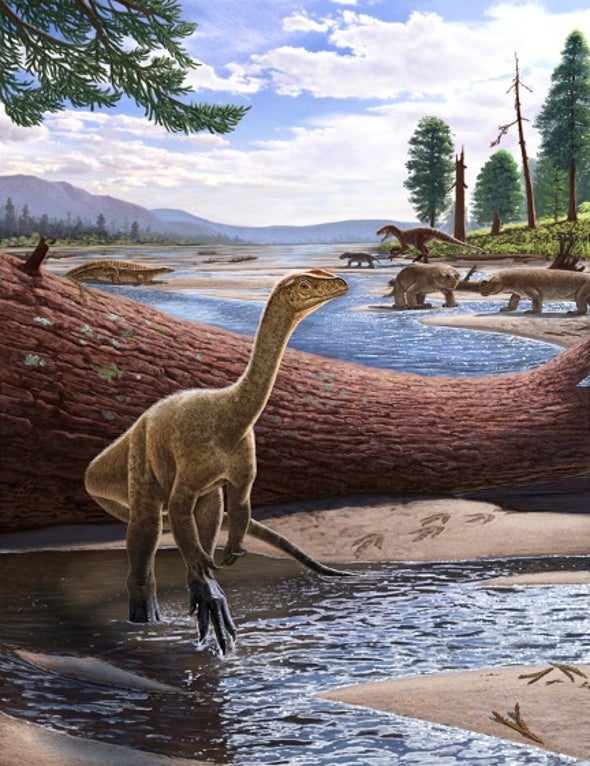
I'd be interested to read more about that particular Carcharodontosaurus. I always take these new claims with a big grain or salt until the material is properly studied and published.
That said, I wouldn't be surprised if there were some absolutely gigantic individuals in all of the big theropods. I just hope some get found lol. That said, I think there seems to be a soft upper limit of about rougly 12.5-13 meters for most theropods. That's roughly where all of the big ones seems to top out at, give or take a bit. Some individuals would undoubtedly have surpassed that, but probably not as a species. Barring Spinosaurus possibly since it has a completely different body plan.


